
The circadian clock influences the long-term water use efficiency of Arabidopsis (Plant Physiol.)
The volume of water required for a given crop yield is largely influenced by the plant's Water Use Efficiency (WUE). Considering that the majority of the water taken up by plants is lost through transpiration, WUE can be improved by modulating stomatal opening. Besides light and temperature, stomatal…
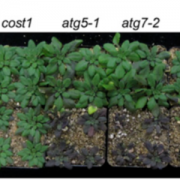
A plant-specific protein, COST1, mediates autophagy to promote drought tolerance (PNAS)
Much remains to be learned about the sensing and signaling mechanisms controlling growth in response to drought. To dissect how plants control drought via autophagy, Bao et al. found a plant-specific protein, COST1 (CONSTITUTIVELY STRESSED 1) containing a DUF641 (domain of unknown function 641) domain,…
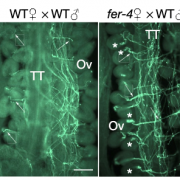
FERONIA controls pectin- and nitric oxide-mediated male–female interaction (Nature)
In flowering plants, fertilization occurs when a pollen tube, growing down the transmitting tissue, arrives at the ovule, ruptures, and releases its content of sperm cells. The pollen tube is guided towards the ovule by LUREs, small cysteine-rich secreted peptides. Timely rupturing and sperm release…
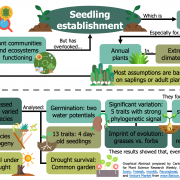
Ecological strategies begin at germination: Traits, plasticity, and survival in the first four days of plant life ($) (Funct. Ecol.)
Seedling establishment is seldom addressed in trait-based ecology. Advocating for the importance of this stage of a plants' life, Larson et al. assessed how functional traits varied in newly emerged seedlings and how this was related to their phylogeny and survival under drought. The authors germinated…
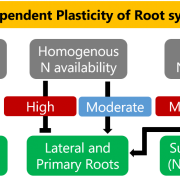
Review. Signalling pathways underlying nitrogen-dependent changes in root system architecture: from model to crop species (J. Exp. Bot.)
Nitrogen (N) is one of the seventeen essential nutrients for a plant to complete its life cycle and is one of the most important determinants of productivity of various crops globally. Nitrate (NO3‑) and ammonium (NH4+) are the major plant-available forms of N. The spatiotemporal heterogeneity of N…
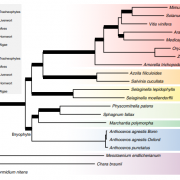
Hornwort genomes (Nature Plants)
A major update in plant genome information is taking place. Two independent groups have published genomes of hornwort species from the Anthoceros genus. Both papers arrive at similar conclusions supporting the model of a single “Setaphyta” clade, with hornworts sister to liverworts and mosses. These…

Roles for CHROMATIN REMODELING 4 in Arabidopsis floral transition (Plant Cell)
The time at which flowers appear is critical for plant reproductive success. As such, the vegetative to reproductive growth transition is governed by several cues: environmental (photoperiod, temperature) and endogenous (gibberellins, age). Here, Sang et al. used an elegant forward-genetics approach…

The embryo sheath is an anti-adhesive structure that facilitates cotyledon emergence during germination in Arabidopsis ($) (Curr. Biol.)
The embryo sheath is a glycoprotein structure formed during seed maturation in Arabidopsis thaliana. However, its function and its persistence after germination have been uncertain. Here, Doll et al. examined germination and seedling establishment of krs mutants deficient in the KERBEROS peptide that…
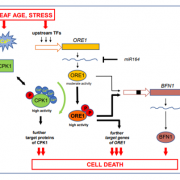
“The secret is how to die!”: CPK1 controls cell death via phosphorylation of ORE1 (Plant Cell)
Cell death, like all other cellular processes, is controlled by a highly complex signaling network. A search for the targets of Arabidopsis calcium dependent protein kinase1 (CPK1) by Durian and co-workers has revealed that it phosphorylates ORESARA1 (ORE1), a master regulator of leaf senescence responses,…

